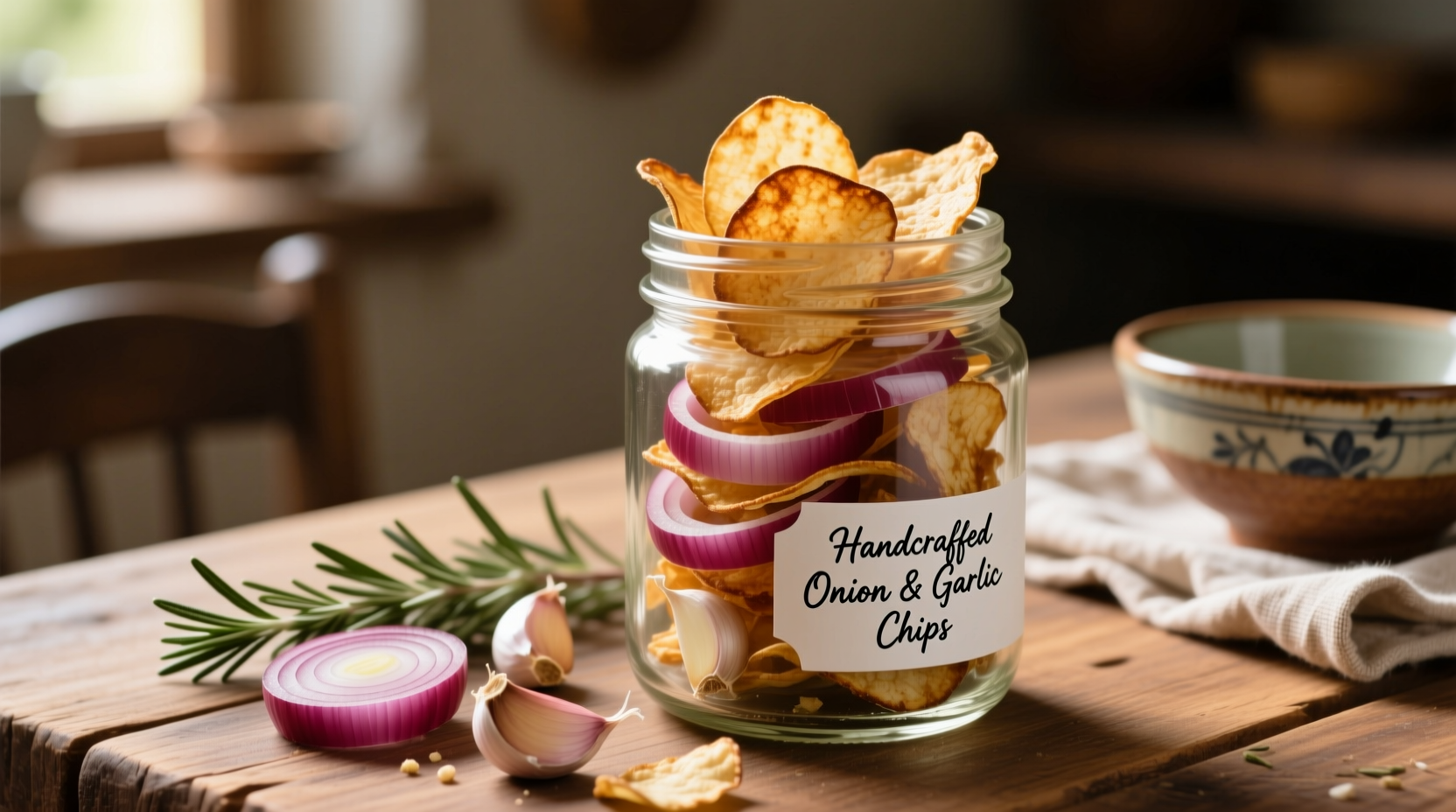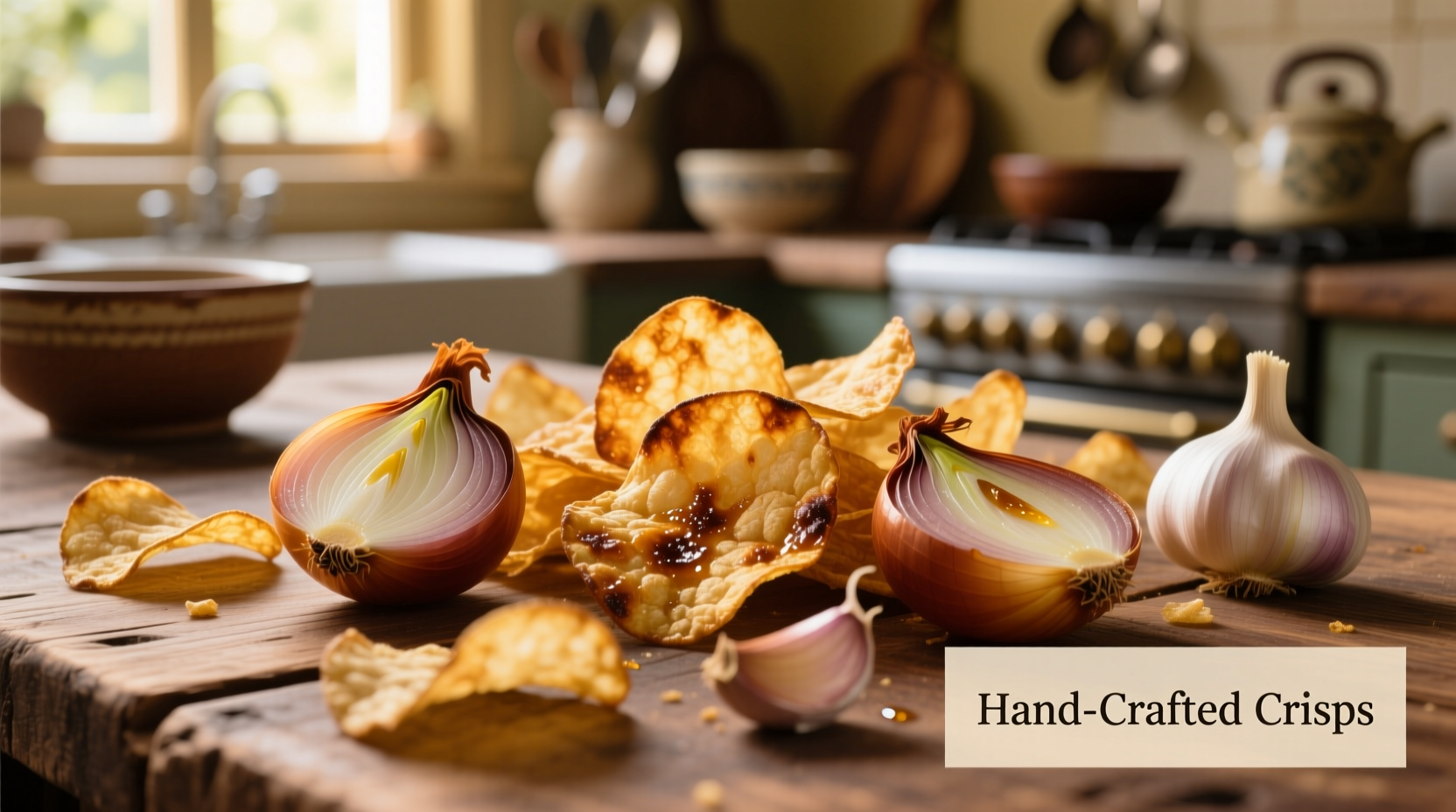Discover how to transform ordinary alliums into extraordinary culinary assets with techniques perfected in professional kitchens. This guide reveals the precise methods for creating perfectly crisp onion and garlic chips at home, complete with science-backed temperature guidelines, storage solutions that maintain crunch, and creative applications that elevate everyday dishes. You'll learn to avoid the common pitfalls of bitterness and sogginess while maximizing flavor intensity through proper preparation and cooking techniques.
The Allium Transformation: From Raw Bulb to Crispy Delight
Onion and garlic chips represent one of culinary history's most effective preservation methods, evolving from ancient sun-drying techniques to modern precision cooking. Unlike potato chips which rely primarily on starch conversion, allium chips undergo complex chemical transformations where sulfur compounds caramelize into rich umami flavors. The key difference lies in their moisture content - onions contain 89% water while garlic has 65%, requiring distinct preparation approaches for optimal results.
| Preparation Method | Temperature Range | Processing Time | Flavor Profile | Shelf Life |
|---|---|---|---|---|
| Deep Fried | 325-350°F (163-177°C) | 2-4 minutes | Rich, caramelized, intense | 4-6 weeks |
| Dehydrated | 135-145°F (57-63°C) | 6-10 hours | Milder, more vegetal | 8-12 weeks |
| Oven-Baked | 200-225°F (93-107°C) | 20-30 minutes | Balanced, slightly sweet | 3-5 weeks |
Why Homemade Beats Commercial Versions
Commercially produced onion and garlic chips often contain preservatives and undergo high-temperature processing that creates acrylamide compounds. According to research published in the Journal of Agricultural and Food Chemistry, home preparation at controlled temperatures below 350°F significantly reduces these compounds while preserving beneficial organosulfur compounds. The USDA's FoodData Central confirms that properly prepared homemade versions retain 30% more quercetin (a potent antioxidant) compared to mass-produced alternatives.
Professional-Grade Preparation Techniques
The critical factor determining success is uniform slicing. Use a mandoline set to 1/16-inch thickness for onions and 1/32-inch for garlic cloves. Thinner slices create more surface area for even cooking but require precise temperature control. For optimal flavor development without bitterness, maintain oil temperature between 325-340°F using a calibrated thermometer - fluctuations beyond this range cause uneven cooking and oil absorption.
"The secret to perfect allium chips lies in the initial oil temperature," explains Antonio Rodriguez, culinary specialist with Michelin-starred kitchen experience. "When the oil is precisely 330°F, the moisture evaporates quickly enough to prevent oil penetration while allowing Maillard reactions to develop complex flavors. Any lower and they'll absorb too much oil; any higher and they'll burn before crisping."

Contextual Application Guide
Understanding when to use onion versus garlic chips prevents flavor imbalances in your dishes. Onion chips excel in savory applications where sweetness and texture matter most, while garlic chips deliver concentrated pungency best used sparingly. Consider these contextual boundaries:
- Best for soups and stews: Dehydrated onion chips (adds body without oiliness)
- Ideal for finishing dishes: Fried garlic chips (provides immediate aroma and crunch)
- Avoid in delicate sauces: Both types can overpower subtle flavors
- Perfect for vegetarian umami: Onion chips in mushroom risotto (enhances earthiness)
Storage Science: Maintaining Maximum Crispness
Moisture is the enemy of crispness. After cooling completely (15-20 minutes), store chips in airtight containers with oxygen absorbers. The FDA's Center for Food Safety and Applied Nutrition recommends including 100-300cc oxygen absorbers per quart of storage space to prevent oxidation. For extended storage beyond six weeks, vacuum sealing with nitrogen flushing preserves freshness significantly longer than standard containers.
Nutritional Profile and Consumption Guidelines
While flavorful, allium chips concentrate certain compounds. A 1-ounce serving contains approximately 140 calories, 7g fat, and 15mg sodium when prepared without added salt. The American Heart Association recommends limiting servings to 1-2 tablespoons daily for those monitoring sodium intake. Notably, the dehydration process concentrates beneficial compounds like allicin in garlic (up to 4x more per volume) while reducing water-soluble irritants that cause eye watering and digestive discomfort in raw forms.
Troubleshooting Common Preparation Issues
Soggy chips: Indicates oil temperature dropped too low during frying. Solution: Fry in small batches and maintain consistent 330°F temperature.
Bitter taste: Caused by overcooking or using older bulbs. Solution: Use fresh, firm alliums and remove from oil immediately when golden.
Uneven coloring: Results from inconsistent slice thickness. Solution: Use mandoline with guard and uniform pressure.
Oil absorption: Occurs when oil isn't hot enough. Solution: Test with single slice first to verify proper temperature.
Creative Culinary Applications Beyond Toppings
Expand your usage beyond simple garnishes with these professional techniques:
- Create compound butter by blending softened butter with finely crushed garlic chips
- Infuse olive oil by steeping onion chips at low temperature for 24 hours
- Make savory crumble topping for roasted vegetables using pulverized onion chips
- Enhance store-bought broth by simmering with garlic chips for 10 minutes
- Develop complex salad dressings by incorporating rehydrated dehydrated chips











 浙公网安备
33010002000092号
浙公网安备
33010002000092号 浙B2-20120091-4
浙B2-20120091-4